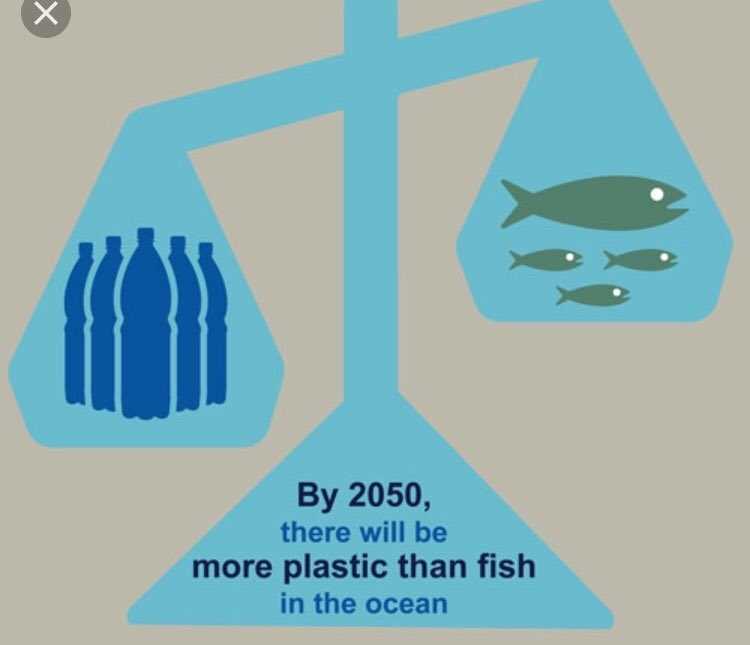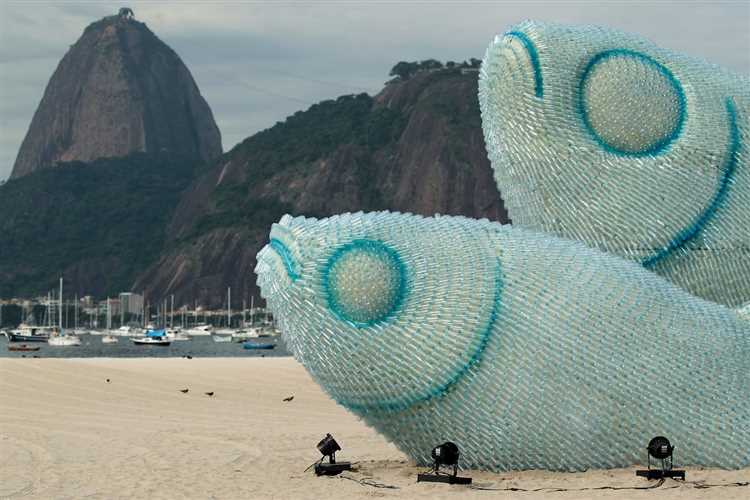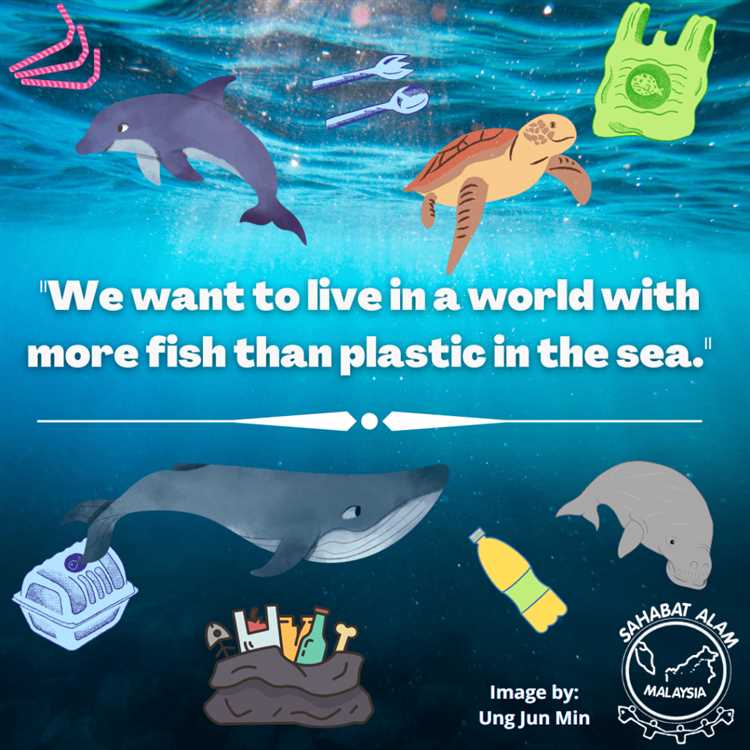
Our oceans are teeming with life, but will this be true in the year 2050? With increasing pressure from overfishing, climate change, and habitat destruction, the future of fish is uncertain. As the demand for seafood continues to rise, the ability of our oceans to sustain healthy fish populations is being pushed to the brink.
Overfishing is one of the greatest threats facing fish populations around the world. The demand for seafood has skyrocketed in recent decades, driven by population growth and changing dietary preferences. However, our current fishing practices are not sustainable. Large-scale commercial fishing operations often use destructive techniques that damage marine habitats and result in the capture of non-target species. This indiscriminate fishing not only disrupts the delicate balance of ocean ecosystems but also leads to the depletion of fish stocks and the collapse of once-thriving fisheries.
Climate change is also taking its toll on fish populations. Rising sea temperatures, ocean acidification, and changing currents are already impacting marine ecosystems around the world. Many fish species are highly sensitive to these changes, as they often rely on specific temperature ranges and nutrient availability for optimal survival and reproduction. As these conditions continue to shift, certain fish populations may struggle to adapt, leading to declines in abundance and potentially even extinction.
- Overview of the current state of fish population
- Pollution
- Climate change
- Factors contributing to the declining fish population
- The impact of climate change on fish population
- Rising water temperatures
- Changing ocean currents
- Ocean acidification
- Steps taken to protect fish population
- 1. Implementing fishing regulations and quotas
- 2. Establishing marine protected areas
- Technological advancements in fish farming
- 1. Aquaculture systems
- 2. Feeding technology
- Future projections for fish population in 2050
- Q&A:
- Is overfishing a threat to the future of fish?
- What are some strategies to prevent overfishing?
- Are there any alternative sources of fish that could meet the demand?
- What are the consequences of the decline in fish populations?
- How can individuals contribute to the conservation of fish populations?
- Is there a growing concern about the future of fish?
Overview of the current state of fish population

The current state of fish populations worldwide is a cause for concern. Due to various factors such as overfishing, habitat destruction, pollution, and climate change, many fish species are in decline. This decline not only threatens the biodiversity of our oceans and freshwater ecosystems but also has significant implications for human populations that depend on fish as a vital food source and for economic stability.
Overfishing is one of the primary drivers behind the decline in fish populations. With advancements in technology and industrial-scale fishing practices, human activities have outpaced the natural reproduction and recovery of fish stocks. Many commercially valuable fish species have been overexploited, leading to their depletion and even local extinctions.
Habitat destruction is another significant factor contributing to the decline of fish populations. Coastal development, including the destruction of mangroves and coral reefs, and the construction of dams on rivers, disrupt the natural habitats that fish rely on for breeding, feeding, and shelter. These disruptions can have long-lasting effects on fish populations, as they may struggle to find suitable habitats and reproductive conditions.
Pollution
Pollution, particularly from industrial and agricultural activities, poses a grave threat to fish populations. Chemical pollutants such as heavy metals, pesticides, and plastics can accumulate in the tissues of fish, affecting their growth, reproduction, and overall health. Polluted water bodies also lead to decreased oxygen levels, making it difficult for fish to survive and thrive.
Climate change
Climate change is altering marine and freshwater ecosystems, further impacting fish populations. Rising ocean temperatures, ocean acidification, and changes in water currents disrupt the delicate balance of marine life. These changes affect the distribution, behavior, and reproductive patterns of fish species, making it challenging for them to adapt and survive.
In conclusion, the current state of fish populations worldwide is a cause for concern. Overfishing, habitat destruction, pollution, and climate change collectively pose significant threats to their survival. Urgent action needs to be taken to address these issues and ensure the long-term sustainability of fish populations for the benefit of both ecosystems and human societies.
Factors contributing to the declining fish population

There are several factors that are contributing to the declining fish population, and if not addressed, they could have devastating consequences. These factors include:
- Overfishing: Overfishing is one of the primary factors driving the decline in fish populations. With advancements in fishing technology, humans are able to catch fish faster than they can reproduce, resulting in a decline in fish stocks.
- Habitat destruction: The destruction of habitats such as coral reefs, mangroves, and estuaries is another major contributor to the declining fish population. These habitats serve as nurseries and breeding grounds for many fish species, and their destruction disrupts the natural lifecycle of fish.
- Pollution: Pollution from various sources, including industrial waste, agricultural runoff, and plastic waste, is having a negative impact on fish populations. Pollutants can contaminate the water and affect the health, reproduction, and survival of fish.
- Climate change: Climate change is causing ocean temperatures to rise and altering the chemistry of the water. These changes can affect fish behavior, migration patterns, and reproductive cycles, making it difficult for them to survive and reproduce.
- Bycatch: Bycatch refers to the unintentional capture of non-target species in fishing gear. This includes marine mammals, sea turtles, seabirds, and juvenile fish. Bycatch can contribute to the decline of fish populations by reducing the number of reproductive individuals.
- Illegal fishing: Illegal, unreported, and unregulated fishing practices pose a significant threat to fish populations. These practices undermine conservation efforts and can lead to the depletion of fish stocks.
Addressing these factors is crucial to ensure the future survival of fish populations. Conservation measures, such as implementing sustainable fishing practices, protecting critical habitats, reducing pollution, and addressing climate change, are essential to preserve fish populations for future generations.
The impact of climate change on fish population
Rising water temperatures
One of the most significant impacts of climate change on fish population is the rise in water temperatures. As our planet warms, so do our oceans, rivers, and lakes. This increase in temperature affects fish in several ways.
-
Some fish species have specific temperature requirements for spawning and reproduction. A change in water temperature can disrupt their breeding patterns and affect their ability to reproduce successfully.
-
Warmer waters also increase the metabolic rate of fish, meaning they require more energy to survive. If their food sources cannot meet this increased demand, fish populations may decline.
-
High water temperatures decrease the amount of dissolved oxygen in the water, which is essential for fish survival. This can lead to fish kills and habitat degradation.
Changing ocean currents
Climate change can also alter ocean currents, which play a crucial role in fish migration patterns and nutrient distribution. As the climate continues to warm, some ocean currents may weaken or change direction, disrupting these essential processes.
-
When fish rely on specific ocean currents for migration, changes in these currents can prevent them from reaching their traditional spawning grounds, impacting their reproduction and overall population numbers.
-
Ocean currents also contribute to the distribution of nutrients, which support the growth and survival of fish and other marine organisms. Changes in currents can disturb this delicate balance, affecting the entire marine ecosystem.
Ocean acidification
Another consequence of climate change is ocean acidification, which occurs as the ocean absorbs increasing amounts of carbon dioxide from the atmosphere. This acidification can have detrimental effects on fish populations.
-
Some studies have shown that increased acidity can impair the development and survival of fish larvae, leading to reduced recruitment and lower population numbers.
-
Ocean acidification can also impact the availability of food for fish, as it affects the growth and health of essential prey species such as zooplankton and shellfish.
Overall, climate change poses significant challenges to fish populations worldwide. To ensure their survival, it is crucial to address the root causes of climate change and implement sustainable practices that promote the resilience and protection of fish and their habitats.
Steps taken to protect fish population
With the increasing threats to fish populations, it has become crucial to take proactive measures to protect them. Governments and organizations are implementing various strategies and initiatives to ensure the sustainability of fish populations for the future. Some of the steps taken to protect fish populations include:
1. Implementing fishing regulations and quotas
One of the key measures to protect fish populations is the implementation of fishing regulations and quotas. These regulations aim to control the amount and type of fish that can be harvested, ensuring that populations have enough time to replenish and grow. By setting catch limits and restricting the use of certain fishing gear, governments can help prevent overfishing and promote responsible fishing practices.
2. Establishing marine protected areas
Marine protected areas (MPAs) are designated regions where fishing activities are restricted or banned altogether. These areas serve as sanctuaries for fish species, allowing them to reproduce and thrive without disturbance. By creating MPAs, governments and organizations can safeguard critical habitats and ensure the long-term survival of vulnerable fish populations.
3. Encouraging sustainable fishing practices
Organizations are working towards promoting sustainable fishing practices that minimize negative impacts on fish populations and their habitats. This includes using selective fishing gear that reduces accidental bycatch, avoiding destructive fishing methods such as bottom trawling, and promoting responsible fishing techniques that prioritize the health and well-being of fish populations.
4. Enhancing research and monitoring efforts
To make informed decisions and effectively protect fish populations, it is crucial to have accurate data and information. Governments and organizations are investing in research and monitoring programs that help understand the status of fish populations, identify potential threats, and develop targeted conservation strategies. By continually monitoring fish populations, it becomes possible to adapt and implement necessary measures to protect them.
The future of fish depends on the actions taken today. By implementing these and other conservation measures, we can work towards ensuring that fish populations will still be around in 2050 and beyond.
Technological advancements in fish farming
As the demand for fish continues to grow, technological advancements in fish farming have played a crucial role in meeting this demand sustainably. These advancements have revolutionized the way fish are bred, raised, and harvested, ensuring a more efficient and environmentally friendly process.
1. Aquaculture systems
Aquaculture systems have become increasingly advanced, allowing fish to be raised in controlled environments such as tanks, ponds, or pens. These systems provide optimal conditions for fish growth, including water quality, temperature, and feed management. With the use of sensors and monitoring devices, farmers can closely monitor and regulate these conditions, ensuring the health and well-being of fish populations.
For example, recirculating aquaculture systems (RAS) are becoming more popular. In RAS, water is continuously filtered and recycled, minimizing the need for large volumes of fresh water and reducing the risk of pollution. This technology has allowed fish farming to be carried out in regions with limited water resources and has significantly reduced the environmental impact of fish farming.
2. Feeding technology
The development of advanced feeding technologies has greatly improved the efficiency and sustainability of fish farming. Traditional farming methods often involve overfeeding, which leads to excessive waste and pollution. However, with the use of automated feeding systems, farmers can accurately measure and provide the right amount of feed to fish, minimizing waste and optimizing growth.
Furthermore, the use of specialized fish feeds has also become more prevalent. These feeds are formulated to provide the necessary nutrients for fish growth, while reducing the reliance on wild-caught fish for feed. This shift towards more sustainable feed options helps to conserve fish stocks in the wild.
In conclusion, technological advancements in fish farming have transformed the industry, allowing for more efficient and sustainable production. Through the use of advanced aquaculture systems and feeding technologies, fish farmers can meet the growing demand for seafood while minimizing the impact on wild fish populations and the environment.
Future projections for fish population in 2050
The future of fish populations is a topic of great concern as overfishing, pollution, and climate change continue to impact the world’s oceans. Scientists and researchers are closely studying these trends to make projections about what the fish population may look like in 2050.
Based on current data and modeling techniques, there are several key projections for fish population in 2050:
1. Decline in overall fish population: The global fish population is expected to decline significantly by 2050 due to overfishing and habitat degradation. This decline in fish population could have serious consequences for both aquatic ecosystems and human populations that rely on fish as a key source of protein and income.
2. Shift in species distribution: Climate change is expected to have a significant impact on the distribution of fish species. Rising water temperatures and changing ocean currents could result in the migration of fish populations to new areas. Some species may thrive in these new conditions, while others may struggle to survive.
3. Decrease in large predatory fish: Large predatory fish, such as tuna and sharks, are particularly vulnerable to overfishing. These species play a crucial role in maintaining the balance of marine ecosystems. However, their populations are projected to continue declining, leading to potential disruptions in the food chain.
4. Increase in farmed fish: As wild fish populations decline, aquaculture or fish farming is expected to play a larger role in meeting the global demand for seafood. This could lead to an increase in the production of farmed fish, such as salmon and tilapia, which can be more sustainable if managed properly.
5. Conservation efforts and sustainable fishing practices: To mitigate the decline in fish populations, it is crucial to implement effective conservation measures and sustainable fishing practices. This includes establishing marine protected areas, regulating fishing quotas, and reducing bycatch and habitat destruction.
Overall, the future projections for fish population in 2050 are concerning but not set in stone. With concerted efforts to address the factors contributing to the decline in fish populations, there is hope for a more sustainable future where fish can continue to thrive in our oceans.
Q&A:
Is overfishing a threat to the future of fish?
Yes, overfishing is a significant threat to the future of fish. It leads to the depletion of fish populations and disrupts the balance of marine ecosystems.
What are some strategies to prevent overfishing?
Some strategies to prevent overfishing include implementing strict fishing quotas, creating marine protected areas, improving surveillance and enforcement, promoting sustainable fishing practices, and supporting small-scale fisheries.
Are there any alternative sources of fish that could meet the demand?
Yes, there are alternative sources of fish that could meet the demand. Aquaculture, also known as fish farming, has the potential to provide a significant portion of the global fish supply. Additionally, advances in plant-based and lab-grown seafood offer alternatives to traditional fishing.
What are the consequences of the decline in fish populations?
The decline in fish populations has several consequences. It can lead to a loss of biodiversity, disrupt marine food chains, impact the livelihoods of people who depend on fish for income and food, and decrease the availability of essential nutrients for human consumption.
How can individuals contribute to the conservation of fish populations?
Individuals can contribute to the conservation of fish populations by making sustainable seafood choices, supporting local and sustainable fishing practices, reducing plastic pollution, advocating for stronger fishing regulations, and spreading awareness about the importance of fish conservation.
Is there a growing concern about the future of fish?
Yes, there is a growing concern about the future of fish. Overfishing, habitat destruction, pollution, and climate change are among the major factors contributing to the decline of fish populations in many parts of the world.